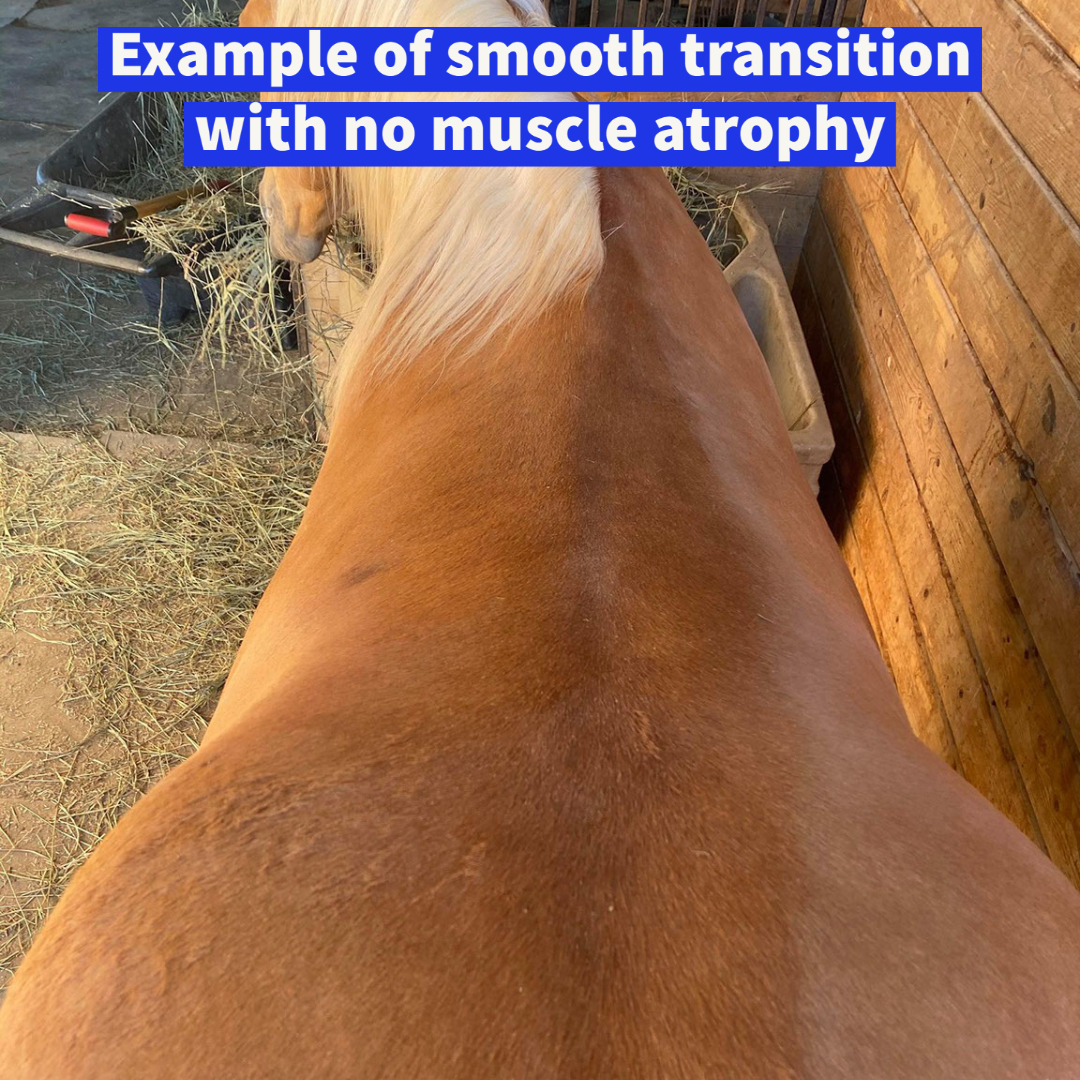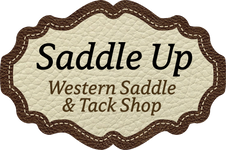
Saddle fit has long been thought to be a myth, and some still believe it is. Our company has been in business for over ten years, and we still see people who have no idea what saddle fit is or who don't believe it exists. Everyone has the right to their own opinions, and you don't know what you don't know, but we have witnessed complete turnarounds in a horse's performance and attitude with the use of properly fitting saddles.
A poor saddle fit can cause a multitude of consequences for the horse and the rider. As mentioned in our saddle fit page, otherwise well-behaved horses can begin kicking, swishing tails, pinning ears or bucking. Poorly fitting saddles tend to slide around or force riders to over-tighten the cinch in order to keep the saddle in place, requiring the rider to constantly readjust. Even more so, ill fitting saddles can cause horses irreparable damage to the muscles along the back.
What is muscle atrophy? Muscle atrophy is the wasting (thinning) or loss of muscle tissue.
Muscle atrophy takes its form when the muscles on a horse' back are broken down and damaged. The muscle wastes away due to an injury or most commonly, an ill fitting saddle. We mostly see it behind the shoulder and wither, but it can occur along the whole back. If a saddle is too narrow, it changes your horse's back shape and depletes their muscles.

When a horse is experiencing pain, their bodies go into "self repair" mode. This means if your saddle is pinching or putting negative pressure on the back, the horse will stop using those sore muscles and they begin contracting them. As this happens, circulation starts to be impacted and oxygen is reduced to the affected area. The muscle will start to un-develop and atrophy will come into place. The pain will also cause them to move in an unnatural way. It changes their gait and causes certain muscles to be over worked or worked improperly. When a horse looks like this bottom picture, the muscles have been atrophied due to a saddle not fitting. It is not something to be taken lightly. It is extensive damage that has been done to a back that has literally killed their muscles.

We see so many horses come in with significant dips behind the shoulders and the owners believe they are just narrow or high withered. That is not true. What used to be a filled in normal back, is now damaged muscle. The back should have a smooth transition, not a dramatic dip or hollow spot. Another thing we see that goes hand in hand with muscle atrophy is damaged hair follicles. Most times, in the dips or hollow spots, we will find hair loss or white hair from the saddle pinching the horse. Many people think "the white spots mean they are being worked or ridden", but that is far from the truth. The white spots are from your saddle causing them pain. The hair turns white because of the extensive damage and the loss of oxygen to that specific spot. You can work to rebuild the muscle, but it is not an easy fix and sometimes the muscle never grows back to 100 percent. However, the white hair is permanent damage and will never go away.

Unfortunately, many people are unaware of what is happening when their saddle does not fit. Horses are extremely willing and accommodating animals. They put up with so much, including excruciating pain, for our amusement. There are so many horses out there with ruined backs. This is why saddle fit is so important and exists.

If you are unsure if your saddle fits, it is always a good idea to have it checked. We are always here to help and we really hope this educates our customers on how important saddle fitting is and how damaging an improper saddle fit is to your horse. A correct fitting saddle is the key to optimum performance, safety, and communication with your horse.
If you are wanting to learn more on muscle atrophy, these articles are very informative and each give a different perspective.
https://equinewellnessmagazine.com/muscle-atrophy/
